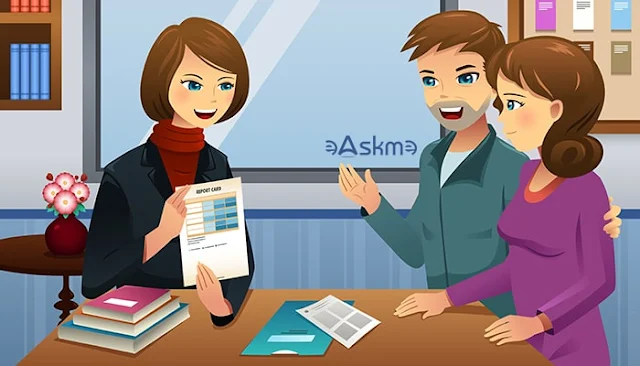In an era where unique learning styles are becoming more recognized and valued, the importance of personalized learning can't be overstated.
This educational approach caters to each student's individual needs, skills, and interests, promoting a more engaging and effective learning experience.
One significant tool that has emerged in this context is customizable worksheets.
Customizable worksheets serve as an innovative solution to the one-size-fits-all traditional teaching method.
 |
| Personalizing Learning with Customizable Worksheets: eAskme |
Using StoryboardThat's worksheet template, for example, allows educators to tailor their teaching materials to the specific needs of each learner, fostering a more inclusive and efficient learning environment.
This article explores how these adaptable resources can revolutionize the education landscape and provide students with a more personalized learning experience.
Understanding Personalized Learning:
Personalized learning, at its core, is an educational approach designed to cater to each student's unique needs, abilities, and learning styles.
Enabling students to learn at their own pace ensures a thorough comprehension of each concept before progressing to the next.
This approach cultivates a profound understanding of the subject matter and alleviates the pressures associated with traditional learning methods.
Additionally, personalized learning recognizes and respects the diversity of learners.
It acknowledges that every student is different, with unique strengths, weaknesses, and ways of processing information.
Personalized learning ensures no student is left behind by tailoring the learning process to these individual characteristics.
The Role of Customizable Worksheets in Personalized Learning:
Customizable worksheets are a dynamic tool that can significantly enhance personalized learning experiences.
These educational resources can be tailored to match each student's learning pace, style, and level.
So, how do customizable worksheets aid in personalized learning? The key lies in their adaptability.
They can be easily modified to cater to different learning objectives, skill levels, and even students' specific interests.
For instance, a teacher could create a math worksheet with varying difficulty levels to challenge advanced learners while providing simpler problems for those struggling.
Moreover, customizable worksheets offer an effective way to differentiate instruction.
Teachers can design worksheets with multiple-choice, fill-in-the-blanks, and short-answer questions to cater to diverse learning styles.
Visual learners might benefit from diagrams, charts, or pictures in the worksheet, while auditory learners might prefer instructions that they can read out loud.
Customizable worksheets support personalized learning by providing flexible, adaptable resources that meet students where they are rather than forcing them into a one-size-fits-all education model.
Creating Effective Customizable Worksheets:
Creating customizable worksheets that effectively support personalized learning involves careful consideration and strategic planning. Here are some key components and strategies to keep in mind:
Align with Learning Objectives:
Each worksheet should be designed with clear learning objectives in mind. What should students learn or practice through this worksheet? Aligning with these goals ensures that your worksheets are purposeful and effective.
Vary the Difficulty Levels:
To cater to different skill levels, include questions of varying difficulty. This allows all students to engage with the material, regardless of their current understanding of the topic.
Include Different Types of Questions:
Incorporate a mix of question types such as multiple-choice, short answer, true or false, etc. This variety caters to different learning styles and encourages critical thinking.
Make It Engaging:
Consider your students' interests when designing your worksheets. Incorporating themes or topics they enjoy can make learning more engaging and enjoyable.
Use Reliable Tools and Resources:
Several online platforms and software can simplify the process of creating customizable worksheets. Some popular ones include StoryboardThat.
This tool offers a variety of templates and options that can help you design high-quality worksheets.
Remember, the goal is to create flexible and adaptable worksheets meeting each student's unique learning needs.
Implementing Customizable Worksheets in the Classroom:
Now that you have created your customizable worksheets, it's time to incorporate them into your classroom.
Here's a step-by-step guide on how to do this effectively:
Introduce the Concept:
Explain the worksheets' purpose and how they will aid in personalized learning.
Ensure students understand that these are designed to help them learn at their own pace and style.
Distribute the Worksheets:
Hand out the worksheets to the students.
If you've created different versions for different skill levels or learning styles, ensure each student gets the version best suited to them.
Guide the Students:
Walk the students through the worksheet's first few questions or tasks.
This will give them a clear understanding of what they need to do.
Monitor Progress:
As students work through the worksheets, monitor their progress. Provide assistance where needed and make note of any common areas of difficulty.
This can provide valuable insight for future worksheet design.
Review and Provide Feedback:
Review the student's work once the worksheets are completed. Provide feedback on their performance and discuss any areas of difficulty or confusion.
This is also a great opportunity to praise students for their efforts and progress.
Measure Effectiveness:
Use assessments or quizzes to measure the effectiveness of the worksheets in achieving the learning objectives.
This will help you refine your approach and make improvements where necessary.
Implementing customizable worksheets may come with challenges, such as ensuring each student is engaged with the material and tracking individual progress.
However, these challenges can be successfully addressed with careful planning and regular feedback.
Conclusion:
Personalized learning, emphasizing catering to individual student needs, is the future of education.
Customizable worksheets are a powerful tool in this approach, providing flexibility and adaptability in teaching methods.
By creating and effectively implementing these worksheets, educators can ensure each student receives an educational experience tailored to their unique learning style, pace, and level.
This fosters a deeper understanding of the subject matter and promotes engagement and motivation among students.
The journey toward personalized learning may pose challenges, but the rewards are well worth the effort.
By embracing customizable worksheets, educators can take significant strides toward creating a more inclusive and efficient learning environment.
If you still have any question, do share via comments.
Don’t forget to share it with your friends and family.
Why?
Because, Sharing is Caring!
Don't forget to like us FB and join the eAskme newsletter to stay tuned with us.
Other handpicked guides for you;





















